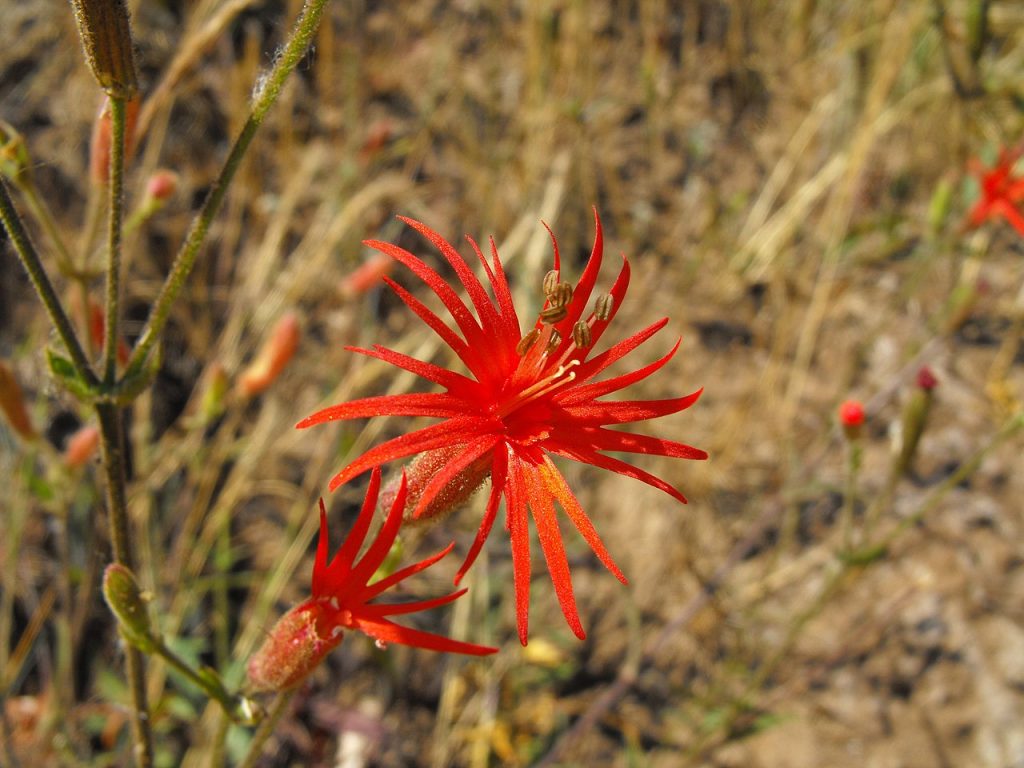
Also known as fringed Indian pink and Mexican campion, this herbaceous perennial is native to northern Mexico and southwestern US from California to Texas and is a member of the carnation family, Caryophyllaceae, that also includes baby’s breath, chickweeds, and sandworts. Growing from a taproot, the plant forms clumps up to 24″ tall and has one to many slender branching stems that are glandular and sticky. Sometimes the branches are vine-like and creep through surrounding vegetation. The lanceolate leaves are covered with sticky hairs and are up to 4″ long but decrease in size on the upper portions of the stems. From late spring to mid summer, loose terminal clusters of star-shaped flowers appear. Each flower is about 1″ across, has 5 bright red petals that are deeply divided into 4-6 pointed lobes, and attracts hummingbirds and insects. Depending on light, heat, and moisture, the plant may go dormant in the summer but is eye catching when in bloom and a good choice for rock, native plant, bird, and woodland gardens. The genus name, Silene, honors the Ancient Greek woodland deity, Silenus, who was a companion and tutor to the wine god Dionysus. The specific epithet, laciniata, is from the Latin word lacinia meaning flap or edge of a garment, and refers to the deeply lobed petals.
Type: Herbaceous perennial
Bloom: Loose terminal clusters of small bright red flowers from late spring to mid summer
Size: 24″ H x 36′ W
Light: Part sun with afternoon shade
Soil: Sandy to rocky, dry, well-drained
Hardiness: Zones 6-9
Care: Cut back after flowering to encourage regrowth
Pests and Diseases: None of significance
Propagation: Seed, stem and root cuttings
Companion Plants: Western columbine, monkeyflower, Yerba Buena
Outstanding Selections:
Photo Credit: Stickpen Wikipedia Commons